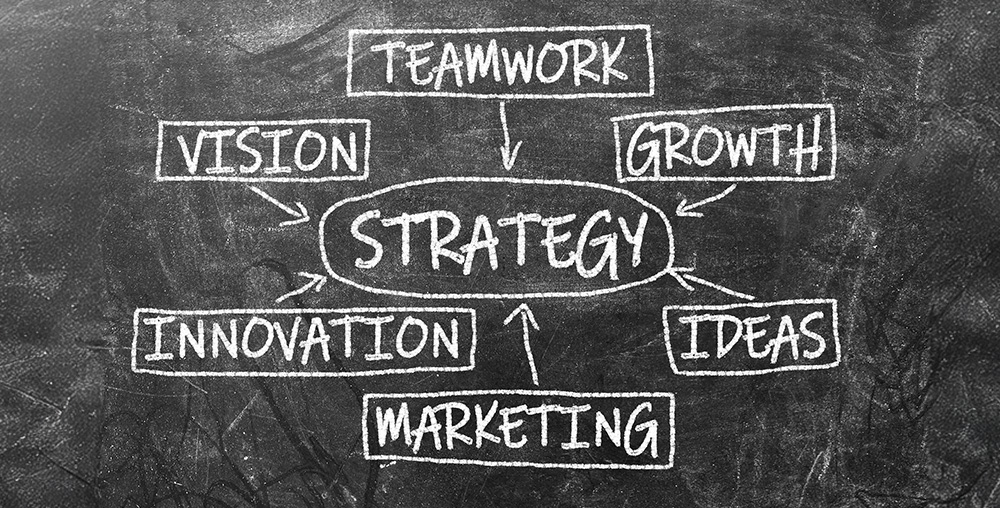
By Christopher Stevenson, Principal Partner, CityGate, LLC
How often do you hear the word “strategic” tossed around in management meetings? Strategic decision-making, strategic products, people strategy, strategic mindset—it’s practically a running gag that slapping “strategic” on any idea is the fast track to getting it noticed.
Yet too often we confuse strategic thinking with tactics. This mix-up can mean the difference between long-term competitive advantage and a cycle of short-lived wins followed by stagnant, unfruitful stretches that slow momentum and dull your market edge.
In retail, it can be tempting to rely on short-term moves like discounting or jumping on fads instead of focusing on long-term strategy. Pressures like fast-changing consumer trends, thin margins, and intense competition can entice managers to act quickly, without considering how these tactical moves may hamstring long-term success.
To avoid this trap, we must be clear about what strategy truly is and, just as importantly, what it is not.
At its core, strategy is straightforward. Despite what all the business books about game-changing companies like Apple and Amazon may say, it’s not necessarily sexy. It’s about diagnosing your organization’s core challenge and setting a guiding policy to tackle it. It sounds dull—and sometimes it is—but it’s what steers your company through the noise.
Tactics on the other hand are the specific actions your organization takes to achieve its objectives. Tactics without strategy often arise from a fear of competition or losing market share but ultimately, they are only distractions that steer you off course from sustained success.
Strategic vs Tactical Thinking
How can you tell if you’re thinking strategically or tactically? Answer the following questions:
Are you evaluating your position in the market? Strategy starts with defining which customers or needs your organization serves and at what price compared to competitors. It’s not about being the cheapest or the fastest—it’s about being unique.
If your focus is on short-term sales boosts rather than defining and strengthening your unique position, you may be trapped in a tactical mindset.
Is your value proposition backed by a well-aligned sequence of activities? A strong strategy requires a set of activities that reinforce each other to create sustainable competitive advantage. If you’re focused just on cutting costs instead of planning for long-term differentiation, you’re thinking tactically. Strategy is about making deliberate choices about how you design, produce, sell, and support your products.
For instance, IKEA’s strategy isn’t just about selling cheap furniture. It’s about building a value chain that supports its market position. By designing stylish, ready-to-assemble products, streamlining logistics, and using a self-service warehouse model, IKEA keeps costs low while maintaining quality and design appeal.
Every part of its operation is tightly integrated, making it hard for competitors to imitate.
Have you made trade-offs that set you apart from rivals? Every great strategy involves knowing what to say no to. Trying to serve too many customer needs or offer too many products leads to dilution, not differentiation. It’s hard to reject opportunities, but if you’re reacting to competitors instead of sticking to a clear market position, you may be prioritizing tactics over strategy.
Nordstrom chooses premium, personalized shopping experiences over low prices. Walmart focuses on rock-bottom prices and an expansive product selection. Both companies made deliberate trade-offs that define their market position and keep them from blending into the noise.
Do your activities fit together to reinforce your competitive advantage? True strategy doesn’t rely on a single core competency—it depends on the synergy of many interdependent choices. If your organization is constantly chasing isolated initiatives rather than ensuring all efforts support a unified direction, you’re likely focusing on tactical wins instead of strategic success.
Take ALDI’s, for example. Its competitive advantage is a lean, cost-focused model where every activity reinforces efficiency and low prices. A limited product range (about 2000 SKUs) simplifies operations; a no-frills shopping experience and coin-operated carts slashes labor and maintenance costs; and prioritizing private-label products ensures consistency and profitability.
Every decision supports the goal of delivering quality at the lowest possible price, helping ALDI attract 25 percent of all U.S. households.
Can your activities be maintained consistently over time? A well-defined strategy should remain consistent. While tactical adjustments can be necessary, strategy is about sticking to a long-term vision that strengthens your market position. If you cannot sustain your activities over an extended period, you’re falling into the tactics trap.
In the end, long-term success isn’t about slapping ‘strategic’ on every idea—it’s about clarity, commitment, and the grit to stay focused. Quick wins will tempt you but chasing them scatters your focus and dulls your edge.
Real strategy comes from defining your unique position, aligning actions, making trade-offs, ensuring synergy, and staying consistent through the noise. Choose consistency over chaos, and watch your organization thrive while others fade.
Looking for a partner to help your organization and leaders move from tactical to strategic thinking? Book a discovery session with us, and let’s discuss how we can help you achieve your goals.

Christopher Stevenson is Principal Partner of CityGate, LLC, which provides leadership development, coaching, and consulting on learning and development to credit unions, associations, and other not-for-profit organizations. A certified coach, Stevenson has over 20 years of experience in leadership development and adult learning. Prior to founding CityGate, Stevenson served as Chief Learning Officer of CUES, developing industry-leading education for credit union board members, executives, and future leaders. He was also responsible for leading research into the trends that shape the credit union industry.